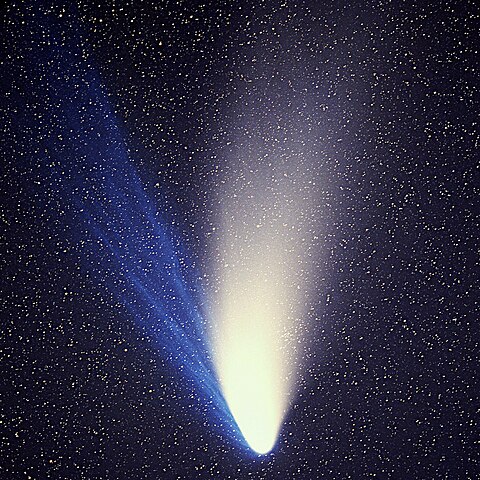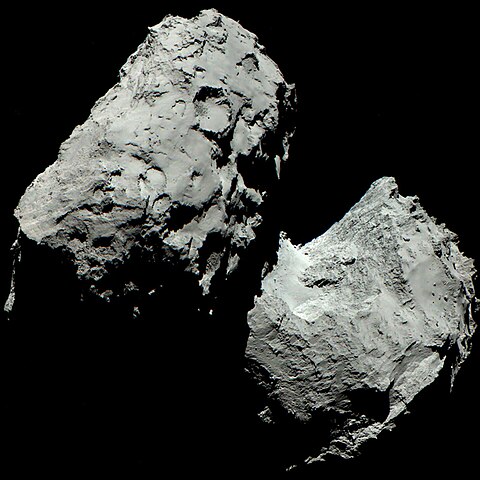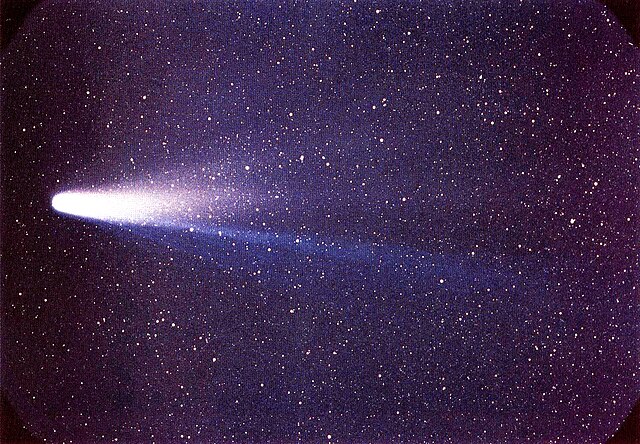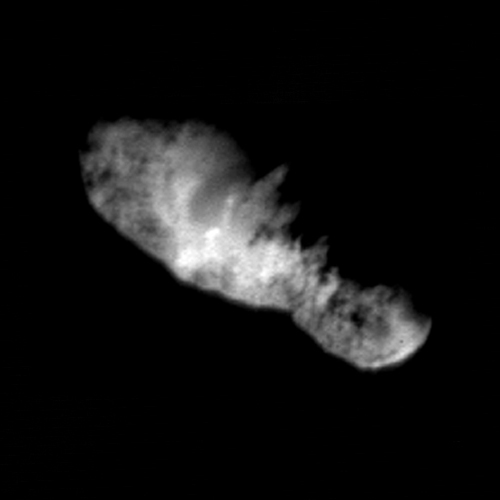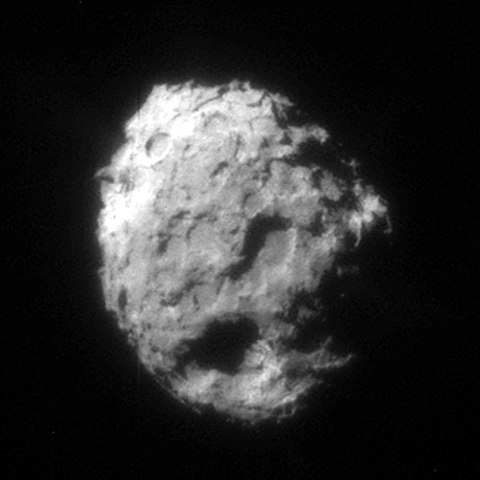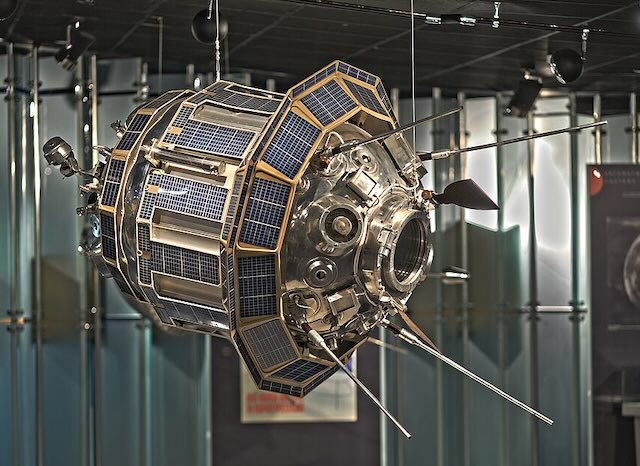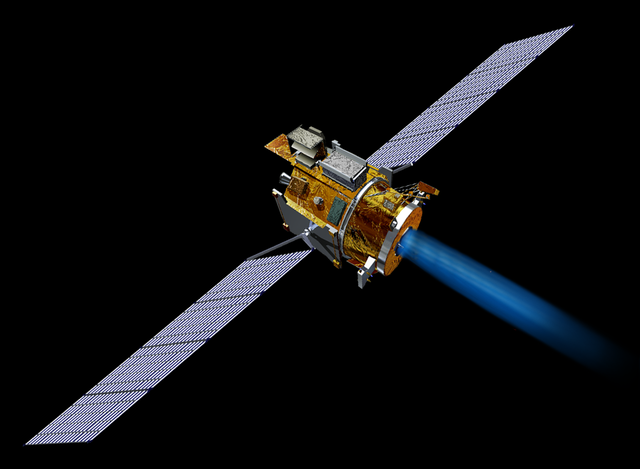1 day / second
0.5 AU
Hale-Bopp (C/1995 O1)
Comet
Hale-Bopp was an exceptionally bright and long-visible comet that passed Earth in 1997, remained visible to the naked eye for a record 18 months, and possessed two distinct bright blue ion and white dust tails.
Key Facts
learn more | Wikipedia |
mass | 1.3000e+19 kg |
radius | 30 km |
hill radius | 17,275 km |
semi-major axis | 177.43 AU |
eccentricity | 0.995 |
inclination | 89.3º |
longitude of the ascending node | 282.73º |
argument of periapsis | 130.41º |
orbital period | 2,363.409 years |
surface gravity | 0.098 g |
discovery date | July 23, 1995 |
discovered by | Alan Hale and Thomas Bopp independently |
dimensions | 60 kilometers in diameter |
albedo | 0.04 |
material composition | Composed of ice, dust, and frozen gases |
